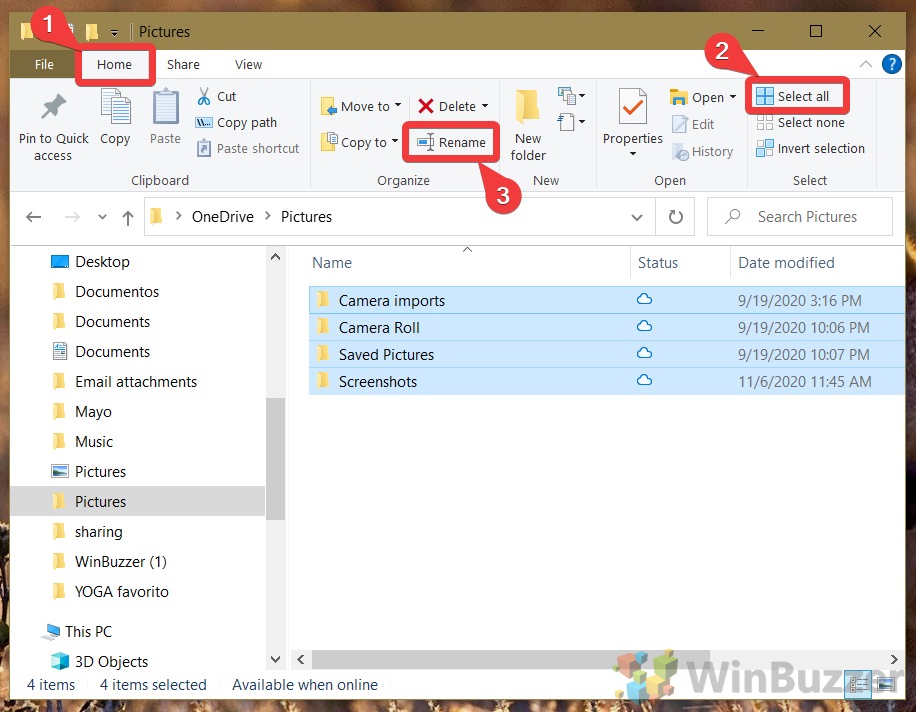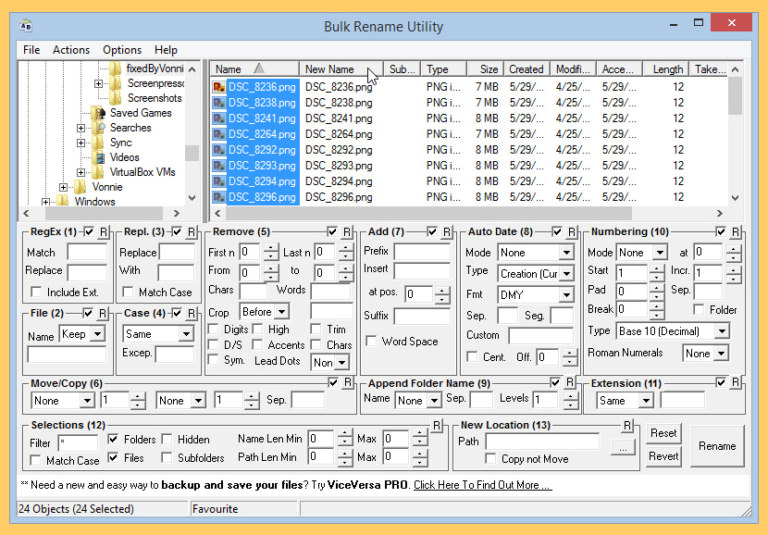
Confirm the renaming process and wait for the files and folders to be renamed.

The Bulk Rename Utility provides a powerful interface from which you can select on how to rename your files. Method 1: Use ‘Bulk rename utility’ to batch rename your files and folders We are going to show you the best way to rename your files using two of the most popular third party applications that allow you to use the properties of your files to rename your files. With this automation, you can rename thousands of files in a few minutes.

A few can read your file properties and use those properties in renaming your files. Most allow you to find a certain word of your filename and replace it instead of picking and using the files’ properties. There are several third party applications/utilities that you can use to rename files. Eventually these methods do not help in saving your time. There might be complex batch renaming MS DOS commands and PowerShell cmdlets that allow you to rename your files, but they don’t seem to be able to pick your file properties or are too complex to execute: you will have to create a text file list of names for the computer to use and your current files must be in a certain format. The only problem with these methods is that you can only rename files one by one. Windows PowerShell also offers a renaming cmdlet. You can rename files from your Windows/File Explorer or via MS DOS (command prompt). Windows does provide ways of renaming your files. The most widely used property for renaming files is the ‘date created’ or ‘date modified’ property.

Most of the time this files are renamed by the utility with numbers according to how they were found if you so choose, you can rename these files using their properties. A common case is where a user has recovered data using a recovery utility. Common properties are ‘Date created,’ ‘Date modified,’ ‘Author,’ ‘Title’ among others tags. Using the file properties are some of the best ways to rename your files.

It will probably take you ages to rename these files, so what you need is a way to bulk rename or batch rename your files. Sometimes you have hundreds of files that you need to rename in a certain format.


 0 kommentar(er)
0 kommentar(er)
